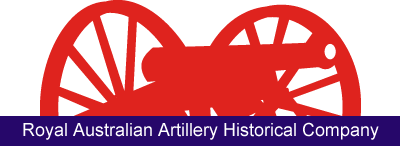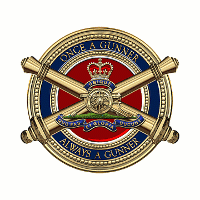Lieutenant Slocombe served with ‘A’ Field Battery in the Commonwealth Occupation Forces, Japan and then at the School of Artillery in Sydney until selected for Air OP training in the United Kingdom in 1949. There he met, wooed and married his beloved English rose Janet—all in the space of six months. This was all a bit much for his fiancé in Australia who sued him for breach of promise, then promptly went to England on the proceeds and married a Pom.
Back in Canberra in 1952, Captain Slocombe became the Army Instructor and Officer Commanding the Air OP Flight (Army Component) flying Austers. At this time, Australia was rotating Air OP pilots through the Commonwealth Division’s 1903 Independent Air OP Flight in Korea and in late 1953 it was Bill’s turn. It was asserted that the Air OPs were the greatest single supplier of counter-bombardment information in Korea. The introduction of a battery of British medium guns about this time aided Captain Slocombe’s timely responses to hostile battery fire and relieved the monotony of visual reconnaissance and passenger flights.
By 1954 it was time for Bill to return to the Gunner fold and a more conventional career for a while—adjutant of 31st Medium Regiment in Victoria, a Long Observation Course in England, instructor at the School of Artillery in Sydney, student at the Australian
Staff College in Queenscliff, battery commander of 103rd Field Battery in Malaya and an operations officer on the staff of Headquarters Australian Army Force Far East Land Forces in Singapore.
Then it was back to flying again. Major Slocombe undertook rotary wing training in the USA in 1964 before taking up the appointment of commanding officer of the 16th Army Light Aircraft Squadron and promotion to lieutenant colonel. Under his leadership in 1966, this squadron became—and remains—the 1st Aviation Regiment. These were exciting times for the fledgling Australian Army Aviation Corps and Bill Slocombe’s name remains part of the legend of that era. For this meritorious service, he was appointed an Officer of the Order of the British Empire in the Queen’s Birthday Honours list of 1968.
An Aviation staff appointment in Canberra and a member of the directing staff at the Australian Staff College later, Colonel Slocombe became the second Director of Army Aviation in 1970. As the Vietnam War era ended, the Australian Army was drastically reduced and conventional warfare training returned. Bill fought and won the battles to retain his beloved Army Aviation which had so proved itself in Vietnam.
With the appointment of Australian Defence Attaché in Pakistan in 1975 Colonel Slocombe took up a new challenge. Asked surreptiously to take photos of Russian installations and equipments if he happened upon any, Bill’s first roll of film came back from the developers with the message, ‘Well done, Colonel Slocombe, but next time could you please remove the lens cap before filming.’ Bill was a gregarious man and life in the Diplomatic Corps in Islamabad revolved around parties, functions and more parties. He made some very good friends there and in his own way contributed to peace and harmony amongst nations—or ‘at least appreciation and sharing of their alcohols and other cultural pursuits’ as his son observed.
Bill’s final appointment was Head of the Service Laboratories and Trials Executive for the Department of Defence. This was back in Canberra where he began looking for life after service. Colonel Bill Slocombe OBE hung up his spurs on this 54th birthday, 24 April 1982.
After some serious world-wide travel, Bill and Janet settled in ‘downtown Qbyan’ as he liked to refer to Ridgeway. This had the country town feel of his youth and the feel of completing a full circle after years of forever on the move around the world.
But his dedication to service did not end with retirement. For many years, Bill was a Legatee, he and Janet delivered Meals on Wheels, and with Colonel Ross Harding they edited and produced the Duntroon Society Newsletter. Bill derived much pleasure from vegetable gardening and bird-watching—of the feathered type in particular.
Colonel Slocombe was a member and keen supporter of the Royal Australian Artillery Historical Company. ‘Unfailingly helpful,’ was how Lieutenant Colonel John Macpherson, the leader in the establishment of the Air OP display in the RAA National Museum at North Head John Macpherson described his assistance to fellow Ubique Gunner Dick Knight in the preparation of a monograph on the history of the Air OP in Australia.
A dog lover all his life, Bill had recently lost his 15-year-old Sally when his accountant told him he needed to shed $6000 for tax purposes. Quick as a flash, he offered the NSW Guide Dog Association a $6000 donation in exchange for an ex guide dog who needed a good home. Two working days later, a woman from Sydney arrived with a lovely mature blond ex guide dog.
‘Bill’s life wasn’t all beer and skittles,’ eulogised son Phil. In 1981, he lost his youngest son Tich, aged 24 years, in a car accident and that weighed heavily upon him.
Then, early in retirement, arthritis caught up with him and he underwent two hip replacements. This took much joy out of his favourite pastime of golf and eventually reduced him to winning only the 19th hole at the Federal Golf Course. Janet’s stroke in the mid 1990s saw Bill take up the gauntlet as her carer and stoically and protectively lead them both to a 60th wedding anniversary in December last year.
Phil describes his father as a straightforward man who would happily call a spade a ‘bloody shovel’; he was intolerant of those he thought fools; and espoused the simple, old fashioned values with which he’d been brought up. He was conservative, intelligent, dutiful and responsible, despaired the decline of standards in public leadership and service and loved and cared for his family and friends. He enjoyed the simple pleasures of wine, women and song, and he was a happy man who loved trying to charm the Woolies’ checkout chicks and the nurses at the hospital. He had a full life and a merciful death.
Vale Colonel William Joseph (Bill) Slocombe OBE—officer, gentleman, world traveller, tribal elder of the Army Aviators, but always a Gunner. |


